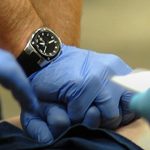Cardiac arrests don’t stop during a pandemic. And we all know the statistic –— immediate bystander CPR can double or even triple a cardiac arrest victim’s chance of survival, and T-CPR could double the number of victims who get CPR from bystanders.
Telecommunicators need to be ready. But skills decay, hesitation and lack of confidence all contribute to delays in recognition of cardiac arrest and increased hands-to-chest time.
“COVID-19 has definitely changed things, for example the safety questions we now have to ask for the first responders,” says Antonella “Toni” Volpe, Support Service Captain for 911 Fire/EMS Communications in Charles County, Maryland. ‘Have you been in contact with anyone who has a confirmed case of COVID-19? Does the patient have a fever 100.4 or greater, Hot to the touch in room temperature? Chills? Trouble breathing or shortness of breath? Persistent coughing, sneezing or wheezing?’ The challenge is asking more questions while not delaying bystanders’ hands to chest.”
Fulfilling the commitment to saving more lives
T-CPR skills improvement can’t come to a halt during a crisis. But traditional classroom EMD training and continuing education are more complicated than usual in the age of COVID-19:
- Classroom training may not allow for social distancing, creating exposure for staff
- Training may be canceled due to building closures and stay-at-home orders
- Required certifications and credentials may lapse due to lack of training
Volpe’s Charles County agency, which began implementing the RQI-Telecommunicator (RQI-T) quality improvement program in August 2019, has been able to continue its efforts despite the current COVID-19 crisis.
RQI-T meets the challenge of providing training and continuous resuscitation quality improvement, reducing the preventable harm caused by poor quality CPR, while addressing the significant challenges presented by the pandemic. Rather than the typical instructor-led group training, it leverages online, simulation-based learning in small doses, along with facilitated coaching and debriefing sessions.
Columbia County, Oregon’s 911 Communications District has had a similar experience with RQI-T, according to Operations Manager Lara Marzilli. “We had other training scheduled that was supposed to be classroom training, so we had to cancel. But we can continue with RQI-T because it can be done individually.”
For PSAPs concerned about the difficulty of implementing a quality improvement effort during the pandemic, Marzilli has some practical advice. “The RQI-T program hasn’t been disruptive to operations at all. If anything, I think our staff appreciates the ‘normalcy’ of continuing the program and seeing the trainer’s familiar face, hearing his voice. The routine of it is appreciated right now.”
Marzilli and Volpe note the positive feedback from their staff members taking part in the program. Says Volpe, “We’ve seen some great changes, some really positive changes. People are getting hands to chest more quickly. I’ve heard staff on the floor saying, ‘If they don’t say yes, you must compress.’ These observations are being made more quickly. And more lives have been saved in the process.”
Adds Marzilli, “In the beginning, people were nervous about doing the RQI-T scenarios. Now, they really appreciate the feedback — both the information itself and the way it’s delivered.”
RQI-T: Simplifying CPR quality improvement initiatives
As both agencies adjust to life during a pandemic, Volpe and Marzilli reflect on the positives RQI-T has made possible. “RQI-T has been a very good experience for us. Staff is appreciative of it,” according to Marzilli. “When I’m at a conference, staff from other centers will ask, ‘Hey, are you using RQI-T?’ and I tell them it’s been really, really positive for us. It’s something we’ll be continuing long-term.”
Adds Volpe, “The RQI-T program is something we really needed — and I’m glad we could continue without interruption during the pandemic.” She continues, “We’ve gotten into a comfortable rhythm. Even with changing state protocols, RQI has been able to incorporate updates very quickly so everything stays current.”
For more information on implementing a T-CPR quality improvement program, visit T-CPR.









